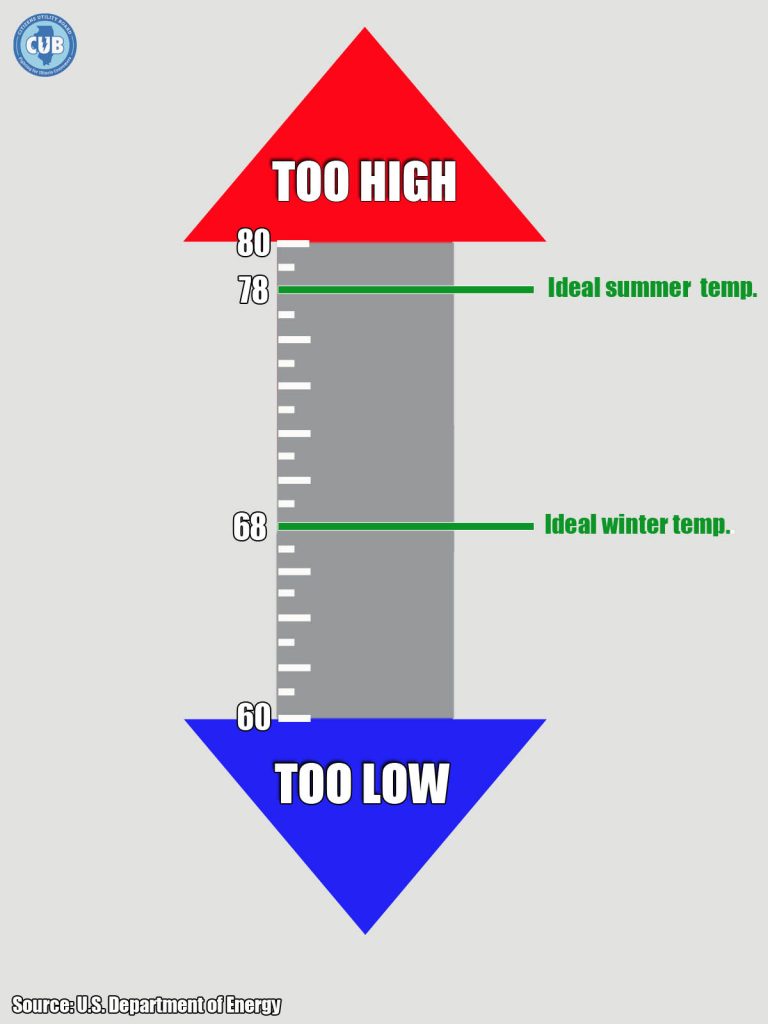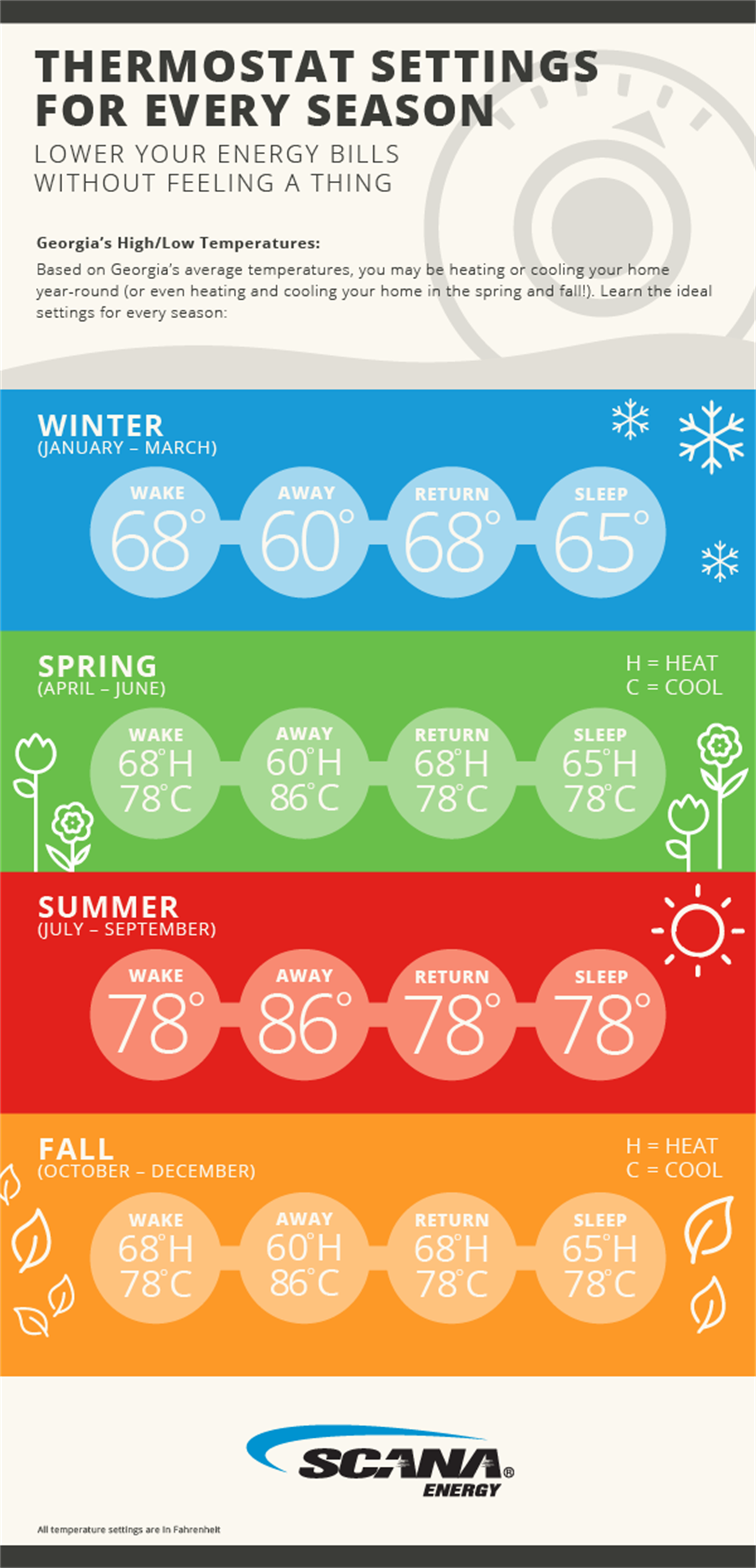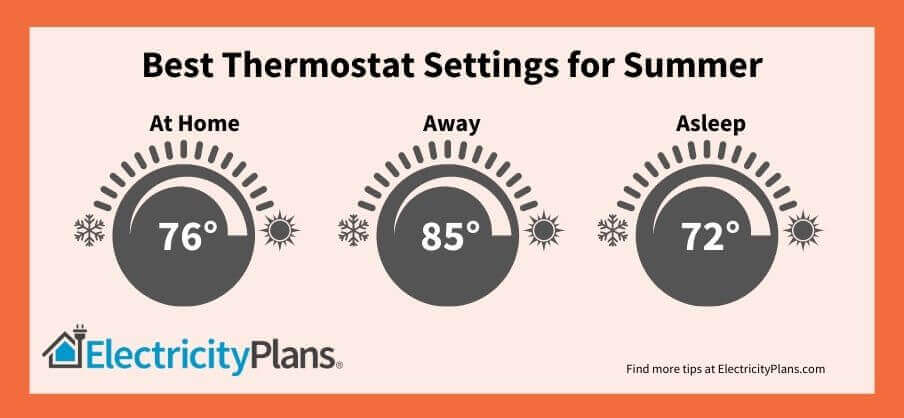Check Best Thermostat Pricing in Amazon
** As an Amazon Associate, I earn from qualifying purchases.
Finding the right thermostat setting for summer can be tricky. You want to stay cool without wasting energy.
Setting your thermostat correctly can save money and make your home comfortable. In summer, the right temperature balance is crucial. You don’t want your energy bill to skyrocket, but you also need to beat the heat. This guide will help you find the perfect thermostat setting for those hot summer days.
Learn how to stay cool efficiently and enjoy a comfortable home all season long.
Ideal Summer Thermostat Settings
Are you struggling to find the perfect thermostat setting for your home during the summer months? You’re not alone. Finding the ideal summer thermostat settings can ensure your home stays comfortable without skyrocketing your energy bills.
Recommended Temperature Range
Experts typically recommend setting your thermostat to around 78 degrees Fahrenheit when you’re home. This temperature is considered energy-efficient and comfortable for most people.
If you’re away during the day, you can raise the temperature to around 85 degrees to save energy. Just remember to adjust it back to a cooler setting when you return home.
Using a programmable thermostat can make these adjustments easier. You can set it to cool down your home just before you arrive. This way, you don’t have to compromise comfort for savings.
Factors Affecting Comfort
Your comfort level can vary based on several factors. Humidity plays a significant role. Even at 78 degrees, high humidity can make you feel warmer.
Consider using a dehumidifier to keep moisture levels in check. This can make your home feel cooler without adjusting the thermostat.
Another factor is air circulation. Ensure your fans are running counterclockwise to create a wind-chill effect. This helps you feel cooler even without lowering the thermostat.
Lastly, personal preferences matter. Some people naturally feel warmer or cooler than others. Find a balance that works for everyone in your household.
What temperature do you find most comfortable during the summer? Experiment with different settings to discover what works best for you and your family.

Credit: www.citizensutilityboard.org
Energy Efficiency Tips
During the summer, keeping your home cool while saving energy can be a challenge. Setting your thermostat to the right temperature is key. It helps you stay comfortable and keeps energy costs low. Let’s explore some energy efficiency tips.
Benefits Of Proper Settings
Proper thermostat settings can make a big difference. They help maintain a comfortable indoor environment. The right settings reduce the strain on your cooling system. It ensures the system runs efficiently. This leads to fewer breakdowns and longer equipment life.
Reducing Energy Costs
Setting your thermostat to 78 degrees Fahrenheit when you’re home can save money. Each degree higher can save 6-8% on cooling costs. Use a programmable thermostat to adjust temperatures when you are away. This way, you avoid cooling an empty house. Ceiling fans can also help. They circulate air, making rooms feel cooler without lowering the thermostat.
Smart Thermostat Technology
Smart thermostat technology has changed the way we control our home’s temperature, especially during the hot summer months. These devices allow for greater control and efficiency, making it easier to find the perfect temperature without wasting energy. But what makes a smart thermostat so beneficial? Let’s explore.
Features To Look For
When choosing a smart thermostat, there are several features you should keep in mind. Look for a device with Wi-Fi connectivity so you can control it from your smartphone, even when you’re not home. This feature makes it easy to adjust the temperature remotely if plans change.
Another key feature is learning capabilities. Some smart thermostats learn your schedule and adjust the temperature accordingly, saving you the hassle of constant manual adjustments. This can be especially useful during the summer when your routine might include vacations or weekends away.
Energy usage reports are also a great feature. Many smart thermostats provide detailed reports on how much energy you’re using. This allows you to identify patterns and find ways to save more. Additionally, compatibility with other smart home devices can enhance convenience and integration.
Advantages Of Smart Thermostats
The biggest advantage of smart thermostats is energy savings. By learning your schedule and adjusting the temperature automatically, these devices can help reduce your energy bills significantly. In the summer, this means you can enjoy a cool home without worrying about skyrocketing costs.
Another advantage is increased comfort. Smart thermostats ensure your home is always at the perfect temperature when you need it. No more coming home to a sweltering house after a day out. You can set the temperature to start cooling down before you arrive.
Smart thermostats also offer convenience. With features like remote control and voice commands, adjusting the temperature has never been easier. Imagine lying in bed on a hot summer night and simply asking your smart assistant to lower the temperature without getting up.
Have you ever thought about how much easier managing your home’s temperature could be with the right technology? By investing in a smart thermostat, you can enjoy a more comfortable, energy-efficient home all summer long.

Credit: jacobsheating.com
Maintaining Indoor Air Quality
Maintaining indoor air quality during summer is crucial for comfort and health. The right thermostat setting helps in achieving this. It can reduce the growth of mold and allergens. Let’s explore how temperature settings impact air quality and best practices to maintain it.
Impact Of Temperature Settings
Temperature settings affect indoor air quality significantly. High temperatures can increase humidity levels. This can lead to mold growth. Mold can cause respiratory issues. Low temperatures can make the air dry. Dry air can irritate the eyes and throat.
Check Best Thermostat Pricing in Amazon
** As an Amazon Associate, I earn from qualifying purchases.
Balancing the thermostat is key. It helps maintain a comfortable humidity level. This prevents mold and keeps the air pleasant. It also helps in reducing energy costs.
Best Practices For Air Quality
Set your thermostat to 78°F when you are home. This is an ideal setting for comfort and air quality. Use a programmable thermostat. It adjusts the temperature based on your schedule. This keeps the air fresh while you save energy.
Regularly clean or replace air filters. Dirty filters can affect air quality. They can circulate dust and allergens. Ensure proper ventilation. Open windows to allow fresh air in. Use exhaust fans in kitchens and bathrooms. This reduces indoor pollutants.
Consider using air purifiers. They remove contaminants from the air. Keep indoor plants. They can improve air quality naturally. Avoid using harsh chemicals. They can release harmful fumes into the air.
Regional Climate Considerations
Setting the right thermostat temperature during summer varies by region. Regional climate considerations play a crucial role. Different areas experience unique weather patterns and humidity levels. Tailoring your thermostat settings to your local climate can improve comfort and energy efficiency.
Adapting To Local Weather
In hot and dry regions, cooling your home efficiently is key. Setting the thermostat to around 78°F can help. This temperature balances comfort and energy savings. In more humid climates, you might need a slightly lower temperature. Aim for 74°F to 76°F. This helps maintain comfort while managing energy use.
Humidity Control
Humidity levels significantly impact indoor comfort. High humidity makes the air feel warmer. To combat this, set your thermostat to a lower temperature. Dehumidifiers can also help. Keeping humidity in check helps the air conditioner work better. It also prevents mold and mildew growth.

Credit: www.scanaenergy.com
Thermostat Placement Tips
Setting your thermostat at the right temperature in summer can save you money and keep you comfortable. But did you know that where you place your thermostat is just as important? Proper thermostat placement ensures your HVAC system runs efficiently. Here are some thermostat placement tips to help you get the most out of your cooling system.
Optimal Locations
Place your thermostat on an interior wall. This helps avoid temperature fluctuations. Choose a central location in your home. This ensures an accurate reading of your home’s temperature. Make sure the spot is away from direct sunlight. Sunlight can cause false readings. Keep it away from windows and doors. These areas can be drafty and cause the thermostat to overwork.
Avoiding Common Mistakes
Avoid placing your thermostat near heat sources. This includes ovens, stoves, and lamps. Heat sources can cause the thermostat to think the house is warmer than it is. Don’t place it in hallways. Hallways do not reflect the temperature of living spaces. Avoid placing it near air vents. The air from the vents can cause false readings. Keep it away from bathrooms. Steam from showers can affect the thermostat’s accuracy. Follow these tips for better comfort and efficiency.
Personal Comfort Adjustments
Set your thermostat to 78°F in summer for comfort. This setting helps balance cool air and energy savings. Adjust as needed for personal comfort.
Finding the perfect thermostat setting in summer can be tricky. Everyone’s comfort level varies. Some like it cooler, some prefer it warmer. Setting the right temperature is key to staying comfortable and saving energy.Customizing For Your Needs
Consider your daily routine. Are you home all day, or just in the evenings? Adjust the thermostat based on your schedule. If you spend most of the day outside, set the thermostat higher. When you’re home, lower it for comfort. Think about your sleep habits. Many people sleep better in cooler conditions. Set the thermostat a few degrees lower at night. A programmable thermostat can help make these changes automatically.Balancing Preferences
Living with family or roommates? Everyone might have different temperature preferences. Communication is key. Discuss and find a middle ground that works for all. Compromise can lead to a comfortable home for everyone. Try using fans to help balance the temperature. They can make a room feel cooler without lowering the thermostat. Ceiling fans or portable fans are great options. This way, you can keep the thermostat at an energy-saving setting while staying cool. Experiment with different settings. Find what works best for your household. Remember, comfort isn’t one-size-fits-all. Personal adjustments ensure everyone stays happy and comfortable during the summer months. “`Troubleshooting Common Issues
Setting your thermostat to the right temperature in summer can be tricky. Sometimes, it doesn’t work as expected, leading to discomfort. Let’s dive into troubleshooting common issues that might arise.
Identifying Problems
First, check if your thermostat is displaying the right temperature. It should match the room’s actual temperature. If not, there could be a calibration issue.
Another problem could be that your thermostat isn’t turning on the AC. Listen for a click when you adjust the temperature. No sound might mean a wiring problem.
If your AC runs constantly, your thermostat might be set too low. This not only wastes energy but also strains your system.
Solutions For Thermostat Issues
Calibrating your thermostat might solve incorrect temperature readings. Check your manual for instructions or consult a professional.
For wiring issues, ensure all connections are secure. Turn off the power before inspecting the wires. If you’re unsure, hire a technician.
To prevent your AC from running endlessly, set your thermostat to 78°F when you’re home. This strikes a balance between comfort and energy efficiency.
Have you experienced thermostat issues? How did you solve them? Share your tips in the comments!
Frequently Asked Questions
Is 72 A Good Temperature For Air Conditioning?
Yes, 72 degrees is a comfortable and energy-efficient temperature for air conditioning. It balances comfort and cost.
Is 78 Too Hot For A House?
78 degrees can feel warm for some people, but it is generally comfortable for many. Adjust based on personal preference.
What Is The Best Setting For Thermostat In Summer?
Set your thermostat to 78°F (26°C) for optimal comfort and energy savings during summer. Lower it when you’re home.
How Cool Should My House Be If It’s 100 Outside?
Set your thermostat to 78°F for optimal comfort and energy efficiency when it’s 100°F outside.
Conclusion
Setting your thermostat to the right temperature in summer is crucial. Keep it around 78°F for comfort and savings. Adjust it higher when away to save energy. Use fans to help cool down rooms. Small changes can make a big difference.
Stay cool, save money, and enjoy the summer. Remember, the right temperature can boost comfort and efficiency.
Check Best Thermostat Pricing in Amazon
** As an Amazon Associate, I earn from qualifying purchases.


